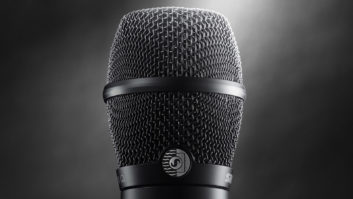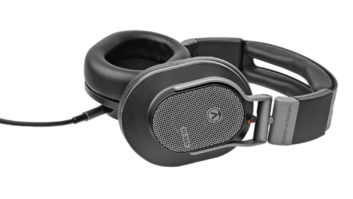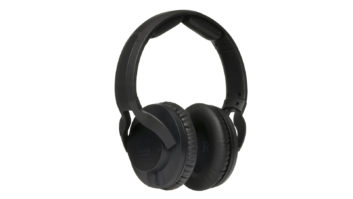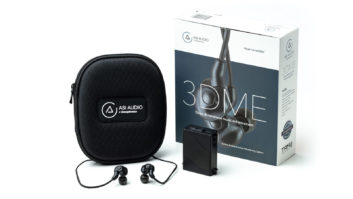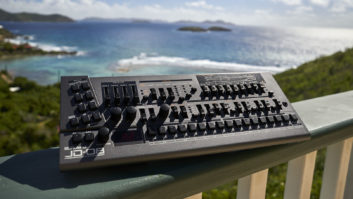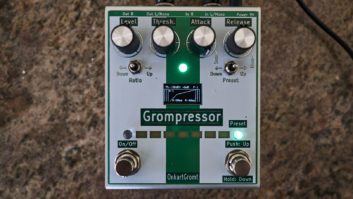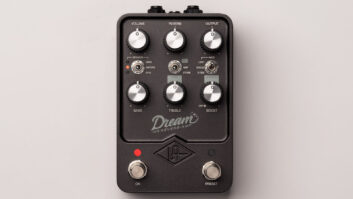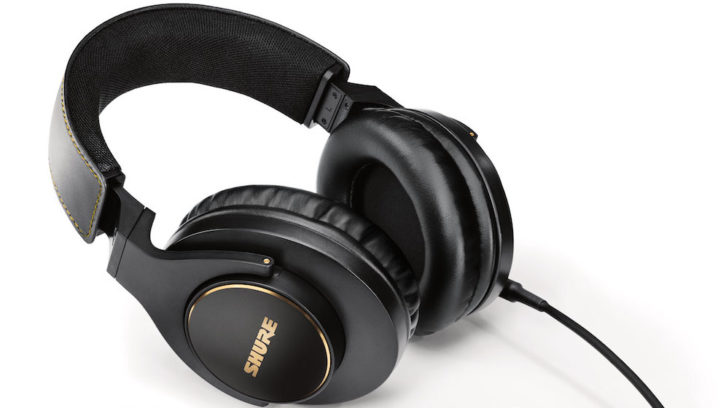
I’ve always liked Shure headphones. As with virtually every product the company makes, they are solidly built and provide solid sound quality. The new SRH840A headphones follow that tradition of quality.
An update of the SRH840, the SRH840A ($149) includes a new look, minor sonic improvements and a couple of accessory changes. Shure also released a new version of the less-expensive SRH440, the SRH440A ($99), though this review will focus on the higher-end model.
The SRH840A features a circumaural (over-ear), closed-back design. That makes them ideal tracking headphones because they minimize leakage that an open mic could pick up. Shure bills them as “monitoring headphones,” positioning them for mixing engineers, too.
Some people prefer open-back headphones for that purpose because they have airflow in and out and don’t feel as isolating. Also, they are not subject to bass buildup that can occur in closed-back models. On the other hand, for mixing on the road or in noisy environments, the isolation of closed-back headphones is an advantage. It comes down to personal preference.
Shure says the SRH840A features some “nuanced” improvements to the sound, resulting in lower harmonic distortion and “more precise left-right driver matching.” I couldn’t compare the SRH840A directly to the SRH840, but I was highly impressed with how the new headphones sounded. I used them over several weeks for both tracking and mixing. They sound balanced, and I was able to mix successfully.
With an impedance of 38 ohms, they’re compatible with various devices. The impedance is even lower than it was on the SRH840, which had a rating of 44 ohms, although the sensitivity is lower, as well (96 dB/mW @ 1 kHz for the SRH840A and 102 dB/mW @ 1 kHz for the SRH840). I tested the SRH840As through both my audio interface’s powerful headphone amp and my MacBook Pro’s much lower-powered 1/8-inch headphone output and had no issues with level.
Focusrite Clarett+ 4Pre USB Audio Interface – A Real-World Review
The 40mm neodymium dynamic drivers are the same size as on the SRH840 and provide the same 5 Hz to 25 kHz frequency response. Shure doesn’t publish the THD specs for either model. In addition to the sonic improvements, Shure updated the aesthetic design. The logo and the border around the outside circumference of the ear cups changed from silver to gold. In addition, the model name and the Left and Right labels outside the headband have been removed. The visual refresh worked: The headphones look sleeker.
I found the SRH840As to be quite comfortable to wear, even for long periods. They’re relatively light, at 0.6 pounds, and the ear cushions are plush and soft. The headband is adjustable, and both ear cups swivel. The latter makes the SRH840A useful for DJs who sometimes like to have one ear on and the other off.
As for the accessory changes, Shure no longer includes a spare set of ear cushions. It’s not critical because you can easily purchase replacements, but it was a bit disappointing.
Instead of a coiled cable (the SRH840), the SRH840A comes with a 9.8-foot straight cable that connects to the headphones via mini- XLR. It terminates in a 1/8-inch jack, but a screw-on 1/8-inch adapter is included, and it attaches quite snugly. I would have preferred that Shure stuck with the coiled cord because they’re a little less likely to get tangled with your chair, studio furniture or other cables. A soft case for the headphones is also included.
Overall, I’m impressed with the SRH840A. I found them versatile, sonically balanced, and useful for tracking and mixing. I was also genuinely surprised at the price. Based on their build quality and performance, I would have thought they’d cost much more.
